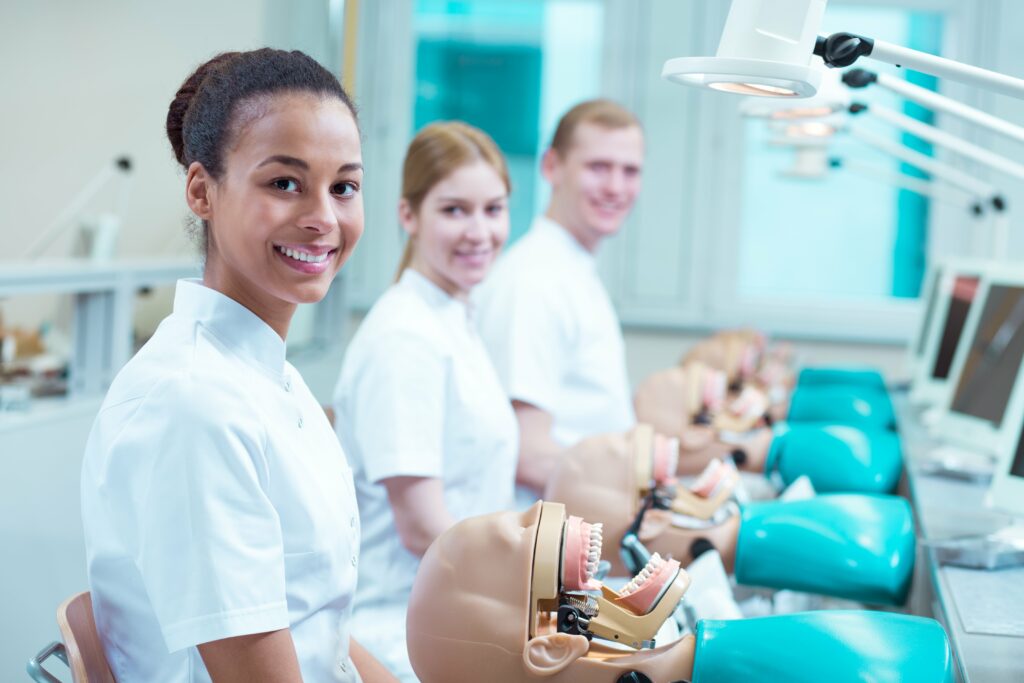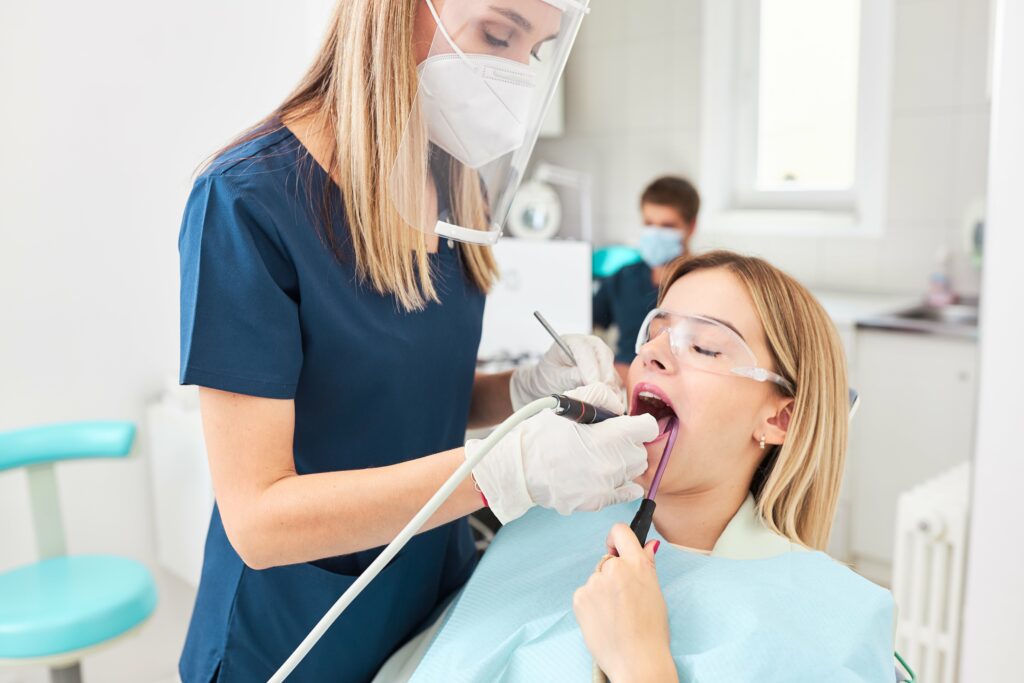So, you want to design Hollywood smiles?
Cosmetic dentistry is one of the most sought-after career paths in medicine. It is the perfect intersection of art and science, where medical expertise meets creative design to transform a patient’s confidence.
But here is the million-dollar question: How long does it actually take?
If you are looking for the short answer, it takes a minimum of 8 years of higher education to become a licensed dentist.
However, the real answer is a bit more nuanced. Unlike Orthodontics or Oral Surgery, “Cosmetic Dentistry” is not a recognized specialty by the American Dental Association (ADA). You don’t just graduate with a degree in veneers. You have to earn it.
In this guide, I will walk you through the full roadmap—from your first day of college to the post-graduate training that actually teaches you how to design a smile.
At a Glance: The Career Roadmap
Don’t have time to read the full guide? Here is the breakdown.
| Career Stage | Duration | What You Accomplish |
|---|---|---|
| Undergraduate Degree | 4 Years | Complete prerequisites (Bio, Chem, Physics) |
| Dental School | 4 Years | Earn your DDS or DMD degree |
| Residency (Optional) | 1-2 Years | AEGD or GPR (Advanced training) |
| Cosmetic Training | Ongoing | CE courses (AACD, Spear, Kois) to master aesthetics |
| Total Time | 8-10 Years | To become a proficient cosmetic dentist. |
Phase 1: The Foundation (Undergrad + Prep)

Timeline: 4 Years (Typically)
Before you can think about veneers, you have to master the periodic table. Most aspiring cosmetic dentists earn a Bachelor’s degree first. Here is the secret: You do not need to major in Biology. Dental schools do not care if you major in Art History or Business, as long as you crush your science prerequisites and the Dental Admission Test (DAT).
The Non-Negotiable Prerequisites: Almost every US dental school will require the following “Core Four”:
- Biology: 1 Year with Lab.
- General Chemistry: 1 Year with Lab.
- Organic Chemistry: 1 Year with Lab. (The “Weed Out” class).
- Physics: 1 Year with Lab.
Dr. Joyce’s Tip: “If you want to be a Cosmetic Dentist, take art classes! Ceramics, sculpting, or color theory electives will train your eye for symmetry and detail better than an extra biochemistry class will.”
The Gatekeeper: The DAT You cannot apply without it. The Dental Admission Test (DAT) is a 5-hour exam that tests your scientific knowledge, reading comprehension, and—crucially for us—Perceptual Ability (PAT). The PAT tests your ability to visualize 3D objects from 2D angles, a skill you will use every day when designing smiles.
Phase 2: Dental School (DDS or DMD)
Timeline: 4 Years
This is where the rubber meets the road. First, let’s clear up a common confusion: DDS (Doctor of Dental Surgery) and DMD (Doctor of Dental Medicine) are the exact same degree. The curriculum is identical; schools just use different names.
Years 1 & 2: The “Firehose” Years (Didactic + Sim Lab)
- What you do: You sit in lectures for 8 hours a day learning the entire human body (not just teeth). You also spend hundreds of hours in the Simulation Lab, drilling on plastic mannequin teeth to develop your hand skills.
- The Goal: To pass your classes and not drill a hole through the side of the plastic tooth.
Years 3 & 4: The “Doctor” Years (Clinical)
- What you do: You finally enter the clinic and treat real patients under strict supervision. You will do fillings, crowns, root canals, and extractions.
- The Cosmetic Reality Check: In dental school, you are learning survival dentistry. You generally will not perform complex cosmetic cases (like 10-unit veneers) here. Your goal is to learn how to fix disease, not how to perform a makeover. That comes later.
The Big Exam: The INBDE Forget what you read about Part I and Part II boards. As of recently, dental students now take the Integrated National Board Dental Examination (INBDE). This is a pass/fail “super-exam” (usually taken in your 3rd or 4th year) that combines basic science with clinical judgment. You must pass this to get licensed.
Phase 3: The Pivot to Cosmetic Dentistry

Timeline: 1-2 Years (Optional Residency) + Lifetime (CE)
Congratulations, you graduated dental school! You are now a licensed General Dentist. Wait, aren’t you a Cosmetic Dentist yet? No. And here is the industry secret: technically, there is no such thing as a “Cosmetic Dentist” degree.
The “Specialty” Myth The American Dental Association (ADA) recognizes 12 dental specialties (like Orthodontics, Endodontics, and Pediatric Dentistry). Cosmetic Dentistry is NOT one of them. This means any general dentist can legally market themselves as a “cosmetic dentist.” But to actually be good at it, you have to go beyond dental school.
Step 1: The “Super-Generalist” Year (AEGD or GPR)
- What it is: Instead of going straight into private practice, many top-tier dentists do a 1-year residency called AEGD (Advanced Education in General Dentistry) or GPR (General Practice Residency).
- Why do it: In one year of residency, you might see more complex cases than you would in five years of private practice. You learn to manage trauma, complex implants, and full-mouth rehabilitation—the foundation of cosmetic work.
Step 2: Post-Graduate Institutes (The Real School) Since dental school taught you survival, you now need to pay for private education to learn “Thrival.” This is where you learn veneers, smile design, and occlusion (how teeth bite together). Top cosmetic dentists spend weekends at institutes like:
- The Kois Center
- Spear Education
- The Dawson Academy
How to Get “Certified” (AACD Accreditation)

If there is no degree, how do patients know you are good? The gold standard in this field is Accreditation by the American Academy of Cosmetic Dentistry (AACD).
- The Process: It takes years. You must pass a written exam, submit clinical cases (before and after photos) to a panel of examiners, and pass an oral exam.
- The Stat: Fewer than 500 dentists in the world have achieved this level of accreditation. It is the closest thing to a “PhD in Cosmetic Dentistry.”
The Cosmetic Dentist Career Timeline
A realistic look at how your 20s and 30s will look.
| Career Stage | Duration | Primary Focus | The "Cosmetic" Component |
|---|---|---|---|
| Undergraduate | 4 Years | Science Prerequisites | Art electives (sculpting/color theory) |
| Dental School | 4 Years | Passing Boards (INBDE) | Learning tooth anatomy & basic white fillings |
| Residency (Optional) | 1 Year | Complex Case Management | Handling trauma and implants |
| Associate Dentist | Years 1-3 | Speed & Consistency | Mastering basic porcelain crowns |
| CE Master | Year 3+ | Advanced Institutes | Learning veneers & full mouth rehab |
| Accredited Dentist | Year 5+ | AACD Accreditation | Documenting cases for certification |
Building the Career: It’s More Than Just Teeth
You can be the best clinician in the world, but if you can’t show your work, you won’t survive as a cosmetic dentist. In this specific field, you are not just a doctor; you are a content creator.
- Master Dental Photography In cosmetic dentistry, your camera is just as important as your drill. You will need to learn how to use a DSLR camera, macro lenses, and softbox lighting to capture high-definition images of your work.
- Why? Because patients buy what they can see. High-quality photography is the only way to communicate “value” to a patient who is paying for veneers.
- Dr. Joyce’s Tip: “Start learning photography now. Even in dental school, take pictures of your plastic teeth. Training your eye to see light and reflection is half the battle.”
- The “Before & After” Portfolio Your portfolio is your resume. As you gain experience, you will build a gallery of “Before and After” cases. This serves two purposes:
- Marketing: It proves to future patients that you can deliver results.
- Accreditation: If you pursue AACD accreditation, these photos are the evidence you submit to the examiners.
FAQ: Common Questions from Aspiring Dentists
Do I need to major in Science to become a cosmetic dentist?
No. In fact, majoring in Art, Psychology, or Business can actually help you! Dental schools only care that you complete the prerequisite science courses (Bio, Chem, Physics). Having a unique major makes you stand out in interviews.
Is “Cosmetic Dentistry” a recognized specialty?
No. The American Dental Association (ADA) does not recognize cosmetic dentistry as a formal specialty. Any general dentist can claim to be a cosmetic dentist. This is why building a portfolio and getting accredited by the AACD is critical to separating yourself from the pack.
How much do cosmetic dentists make?
It varies wildly based on location and skill. While the average general dentist in the US makes around $160,000 – $200,000 per year, a successful cosmetic dentist with a high-end private practice can earn significantly more because cosmetic procedures (like veneers) are high-fee services that are rarely covered by insurance (cash-based).
Can I start doing veneers right out of dental school?
Technically, yes. Realistically, no. Most new grads need a few years to master the basics of occlusion (bite) and bonding before tackling complex aesthetic cases. If you rush it, you risk failures that can hurt your reputation early on.
A Marathon, Not a Sprint
The path to becoming a cosmetic dentist is a journey of approximately 8 to 10 years, encompassing undergraduate education, dental school, and a lifetime of specialized training.
It is a long road, but the destination is incredibly rewarding. There is no better feeling than handing a patient a mirror and watching them cry tears of joy because they finally love their smile.
If you are ready to commit to the science, the art, and the grind—welcome to the profession.





















